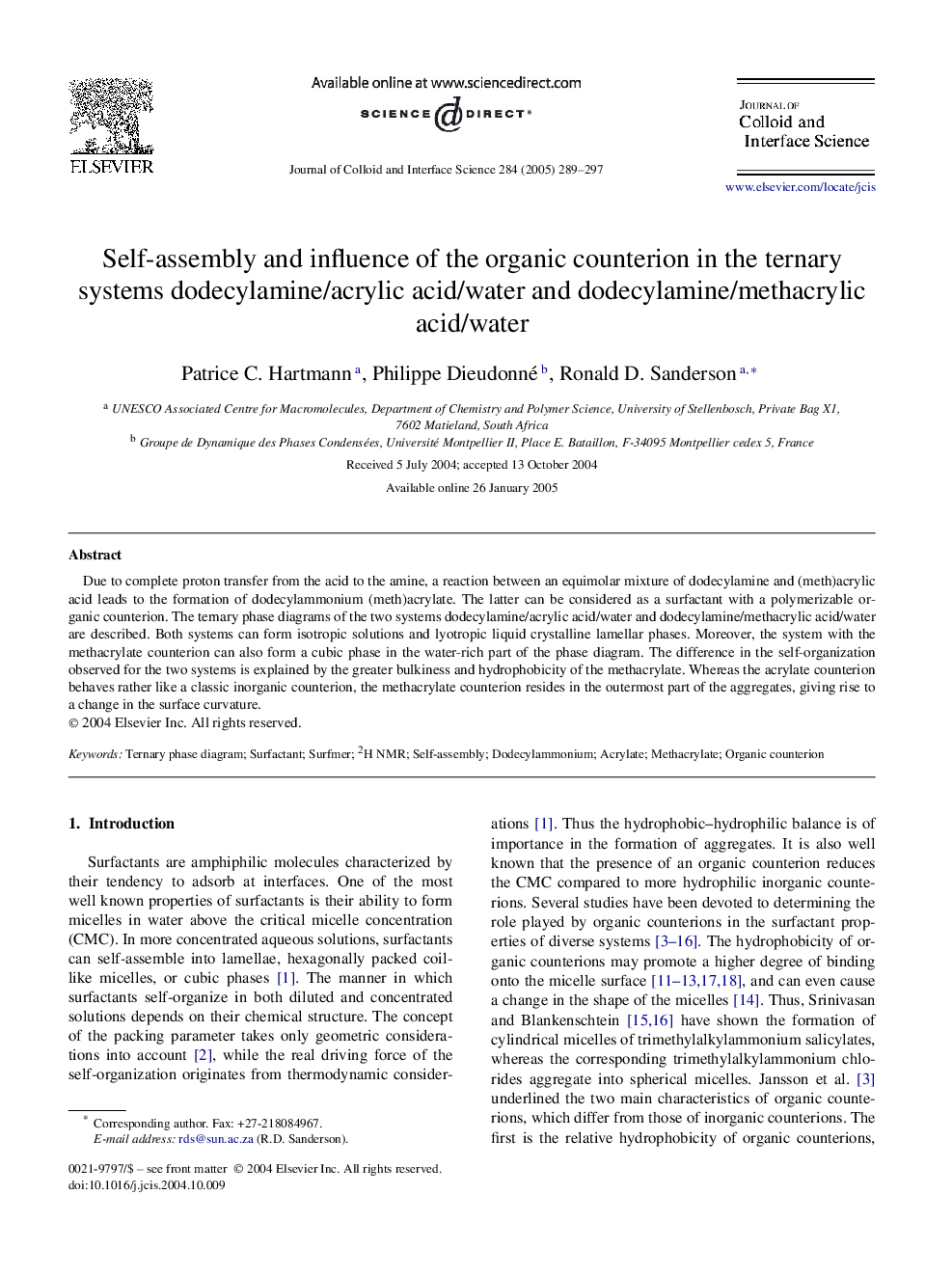| Article ID | Journal | Published Year | Pages | File Type |
|---|---|---|---|---|
| 10378187 | Journal of Colloid and Interface Science | 2005 | 9 Pages |
Abstract
Due to complete proton transfer from the acid to the amine, a reaction between an equimolar mixture of dodecylamine and (meth)acrylic acid leads to the formation of dodecylammonium (meth)acrylate. The latter can be considered as a surfactant with a polymerizable organic counterion. The ternary phase diagrams of the two systems dodecylamine/acrylic acid/water and dodecylamine/methacrylic acid/water are described. Both systems can form isotropic solutions and lyotropic liquid crystalline lamellar phases. Moreover, the system with the methacrylate counterion can also form a cubic phase in the water-rich part of the phase diagram. The difference in the self-organization observed for the two systems is explained by the greater bulkiness and hydrophobicity of the methacrylate. Whereas the acrylate counterion behaves rather like a classic inorganic counterion, the methacrylate counterion resides in the outermost part of the aggregates, giving rise to a change in the surface curvature.
Related Topics
Physical Sciences and Engineering
Chemical Engineering
Colloid and Surface Chemistry
Authors
Patrice C. Hartmann, Philippe Dieudonné, Ronald D. Sanderson,
